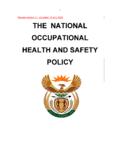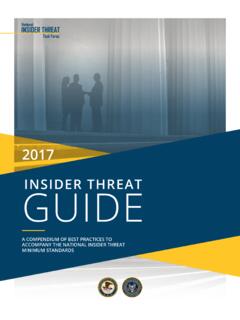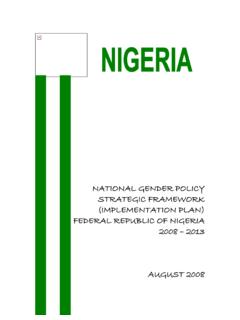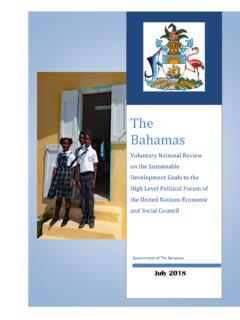Transcription of Meeting the Challenges of Curriculum and Instruction in ...
1 Journal of Social Studies Education Research Sosyal Bilgiler E itimi Ara t rmalar Dergisi 2017:8 (3),76-92 76 Meeting the Challenges of Curriculum and Instruction in School Settings in the United States Hasan Aydin1, Burhan Ozfidan2, Douglas Carothers3 Abstract The United States is one of many countries currently undergoing significant changes in educational institutions, particularly in K-12 settings. Most pronounced among these is the impact of unprecedented demographic changes on the Curriculum and Instruction provided in schools. Four other factors are also influencing Curriculum and Instruction including 1) policy changes, 2) emerging new technologies, 3) globalization, and 4) the refugee and immigration issue.
2 Each of these areas provides Challenges for both school settings and teacher educators. These Challenges and the obstacles they create must be examined and specific recommendations must be developed for teachers, teacher educators, and policy -makers to assist in Meeting each challenge. Among these recommendations, research shows that: 1) schools must change the structures, culture, and programs of Curriculum and Instruction to meet the needs of a diverse student body, 2) researchers in higher education institutions must focus their work to help the federal government, state leaders, and school districts decide upon the most appropriate reforms and changes to Curriculum and Instruction in school settings, 3) more resources from a variety of sources must be invested in technology-use training so teachers can better prepare students to use technology, especially in the context of new assessments, 4) educators should define and advance an agenda that prepares youth for global citizenship, and 5)
3 The core values of educators must include respect, integrity, commitment and excellence, the promotion of diversity and gender equity, choice, and dignity for all students. Keywords: Challenges , demographics, policy , globalization, technology, refugees and immigration, education, United States Introduction There has been a great deal of research on Curriculum and Instruction . Still, issues including dramatic demographic changes, policy changes, globalization, emerging technologies, and concerns surrounding refugees and immigration remain challenging for both school settings and teacher educators. Little discussion is present in the literature about the Challenges and problems that educators encounter during the implementation process and how these Challenges and problems are overcome (Shilling, 2013; ).
4 This study highlights the Challenges to Curriculum and Instruction in public schools and analyzes both these Challenges and the opportunities that exist for teachers, teacher educators, policy makers, and other practitioners as they work to overcome these Challenges . In this context, the Challenges 1 Assoc. Prof. Dr., Florida Gulf Coast University, Fort Myers, FL, USA, 2 Post-doctoral Associate. Texas A&M University, College Station, 3 Assoc. Prof. Dr. Florida Gulf Coast University, Aydin et al. that exist for Curriculum and Instruction have the potential to result in significant benefits for a new generation of students in a rapidly changing world. This paper surveys scholarship related to the development of Curriculum and Instruction in public schools in the United States.
5 It examines the issues and opportunities as well as the goals and strategies for Curriculum and Instruction and suggests guidelines to help ensure that emerging curricula are responsive to the needs of students in a rapidly changing world. This review also describes the available research on specific concepts that were chosen for analysis and represented the research efforts up to the end of May 2017. It incorporates data derived from various sources, including reviews of literature, books, research center reports, peer-reviewed journals, international and national government reports, conference papers, websites of education departments of each state, and a review of school districts school improvement initiatives. Ultimately, reactions to the following five Challenges will dramatically influence the context of Curriculum and Instruction in the United States.
6 These Challenges are 1) demographic changes, 2) policy changes, 3) emerging technologies, 4) globalization, and 5) refugee and immigration issues. Beyond Curriculum and Instruction , Herrera (2012) argues that the extent to which educators succeed in adapting to these Challenges may well determine the future quality of life in the United States. She further indicates that each challenge already involves a pattern of current constraints on an educator s ability to address that challenge while simultaneously offering the possibility of opening the door to promising perspectives for critical thinking about changes in the future for teaching and teacher education in diverse schools and classrooms ( ).
7 Challenge One: Demographic Changes The demographic profile of America s population, including its public school population, is undergoing rapid and profound changes. According to Hochschild and Scovronick (2005), dramatic demographic changes will occur in the early decades of the 21st century, with racial and ethnic diversity increasing as baby boomers age and birth rates and immigration laws change. Hochschild and Scovronick also assert that school-aged children will be the most diverse segment of the population. They conclude that that though these demographic changes create the potential for serious disagreements about public education, they also offer the opportunity for the citizenry to strengthen its commitment to public education.
8 Thus, changes in classroom demographics caused by an increasingly heterogeneous student population should be viewed by educators as both a challenge and an opportunity. Journal of Social Studies Education Research 2017: 8 (3),76-92 The 2014-2015 school year introduced a significant cultural shift: it was the first time that the the majority of students in American public schools were not White (The National Center for Education Statistics - NCES, 2015). Because the teaching force has historically been overwhelming white, this demographic shift presents Challenges to an educational system that has historically struggled with educating students who are non-White, who come from a background of poverty, or for whom English is not the native language (Corona, et al.)
9 , 2017). This demographic change has widened the experiential gap between teachers and their students, presenting Challenges for both teachers and teacher educators. In 2011-12, 82% of K-12 teachers in the United States were White but no other racial/ethnic group comprised more than 10% of the teaching force. A drop in White student enrollment has further exacerbated the cultural and experiential mismatch between teachers and their students. Sixty-one percent of students in American schools in 2000 were White, but the percentage of White students had fallen to by 2014 (NCES, 2016). The National Center for Educational Statistics (2014) expects this trend to continue and projects that of students will be members of minority groups by 2022.
10 Thus, a largely homogenous White teaching force is charged with providing Instruction to a student body that is increasingly culturally and ethnically diverse. Students come to class with various levels of competence and academic preparation, different degrees of motivation to succeed in school work, different social skills, and various levels of maturity (Florin & Hall, 2008, p. 40;). These students also vary in regards to their race, culture, socio-economic status, and belief systems. Even greater than the differences between students, however, are the differences between students and their teachers and between the learning styles and needs of the students and the types of Instruction teachers have been prepared to offer (The Keys to Effective Schools, 2007).

















